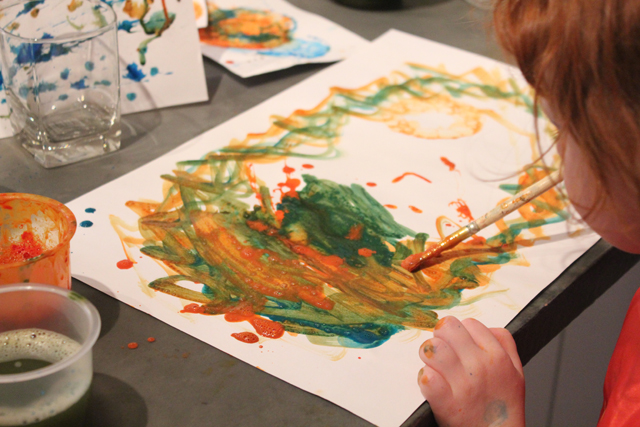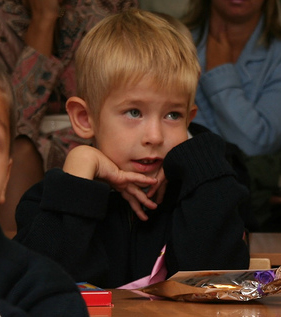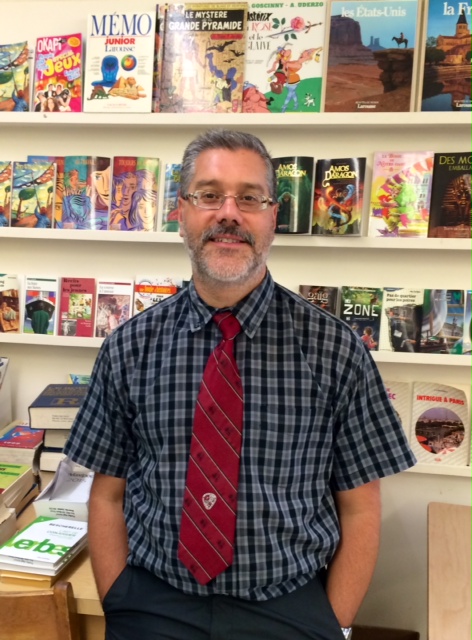Artistic expression has always been a reflection of human creativity. With the emergence of technologies in the mid-20th century, many artists have included technology as a means for creation and expression. From intricate sculptures to dynamic paintings, the fusion of robotics and coding has been revolutionizing how art can be created or remixed. In today’s school setting, students have increasing access to robots and coding platforms that can be used for creating art. This blog article is a brief introduction to the fascinating world where robotics meets artistry, and unveils different robots and coding platforms that empower students to blend creativity with computational thinking.
Research & Art History
The use of computers and robots to create art is not new! Many artists broke new ground in the mid-20th century by merging traditional artistic practices with emerging technologies. Vera Molnar, a Hungarian media artist, was one of the first to use computers to create geometric, abstract designs, exploring the realms of algorithmic art. Desmond Paul Henry transformed old military equipment into drawing machines, revealing the unexpected artistic potential of existing mechanical systems. Harold Cohen’s explorations in AI led him to develop the AARON program that he used to autonomously create intricate drawings over the span of 50 years.
These and many other artists (see more in the Appendix below) expanded the possibilities of artistic creation through their innovative use of technology, and laid the groundwork for the field of digital and machine-generated art that continues to grow today.
Sphero Mini Art

Students can dip Sphero Mini into paint and use the remote control feature to create art.
Sphero is a spherical robot that can be controlled by any Bluetooth device such as a tablet or smartphone. It is perfect for exploring STEAM concepts with the younger students because of the variety of ways it can be coded. On their device, students can simply use the remote control feature in the Sphero Edu app or draw out their design in the app, and Sphero will recreate the movement.
Here’s where it gets really exciting: You can paint with different models of Sphero! We suggest using Sphero Mini for painting since the shell is removable and can be easily washed. I like to tape down a long piece of paper (from a paper roll), then I add a surrounding barrier on top to contain the Sphero Mini. Large empty picture frames work great as a surrounding barrier.
Once the painting space is set up, students can take turns dipping Sphero Mini into the paint and use the different coding features to create their masterpiece. This art activity often sparks interesting conversations about Action Painting, color mixing and movement.
The painted paper can then be used to create other forms of art. For example, a cycle 1 class was studying the life cycle of the butterfly. The students cut up their painting into different shapes in order to recreate a caterpillar and a butterfly.
Root Art

Challenge students to code shapes like hearts or stars that can become part of larger or more complex art pieces!
Some kids, and even adults like me, don’t see themselves as natural artists and can hesitate to start art projects. Incorporating robots or coding programs can sometimes alleviate anxiety and help spark artistic creativity!
iRobot Root has a built-in marker holder which makes it a great companion for any art class. You can program Root to write words or draw pictures using the iRobot Coding App. The app comes with pre-coded templates to draw unicorns, spaceships and more. You can adjust these templates to make unique creations or code images from scratch. Once Root draws an outline, students color in the picture. A coding and coloring activity can be fun for student buddies; the older students can lead the coding, and the younger students can lead the coloring. The art creations can then serve as inspiration for language activities!
One of my favorite features of Root is that its underside is magnetic, so you can code it to draw on your classroom whiteboard! Root’s touch sensors can also add a collaborative element to your art class. Students can program Root to draw different figures when an area of the robot is touched and then create new works of art using these sensors. I like to challenge teams’ kids to program a shape. They practice authentic oral language skills when problem solving together. Then they can create an art piece using the shape as a base for part of their art piece.
TurtleArt
STEM education is a powerful foundation, but it’s incomplete without art, the bridge that connects these disciplines. LEARN emphasizes art as the essential link: the prototype, the formula made real, the design that brings ideas to life visually. This connection is beautifully embodied in Turtle Art, a programming platform inspired by the 1967 creation Turtle Logo by Wally Feurzeig, Seymour Papert, and Cynthia Solomon. Reimagined by Brian Silverman and Artemis Papert, Turtle Art uses block programming, geometric shapes, and math to create captivating art.
“TurtleArt lets you make images with your computer. The Turtle follows a sequence of commands. You specify the sequence by snapping together puzzle like blocks. The blocks can tell the turtle to draw lines and arcs, draw in different colors, go to a specific place on the screen, etc. There are also blocks that let you repeat or name sequences. Other blocks perform logical operations.”
It’s free, fostering limitless possibilities for developing imagination, computation, and creativity. In my experience using Turtle Art with students from grades 1 through 8, even self-proclaimed “non-artists” blossom into creative minds within a few activities. Engaging with Turtle Art a few times ensures you’ll never forget the vital role of art in STEAM education (Science, Technology, Engineering, Arts, and Mathematics).
Turtle Stitch

Create interesting designs in Turtle Stitch by using the coding blocks. Loops help to make intricate patterns. Bring your code to life by using an embroidery machine to stitch your creation.
Turtle Stitch is an innovative educational tool that combines coding and textile arts. It allows users to create embroidery designs using block coding similar to Turtle Art and other coding environments such as Scratch. With Turtle Stitch, students can learn programming fundamentals while designing intricate embroidery patterns, bridging the gap between computer science and art.
One of the most exciting aspects of Turtle Stitch is its integration with embroidery machines. After creating a design using the Turtle Stitch platform, users can export their code-generated patterns to compatible embroidery machines. This allows students to see their digital designs come to life as tangible embroidered pieces. By combining Turtle Stitch with an embroidery machine, students not only develop coding skills but also gain hands-on experience with modern fabrication technology. This process enhances their understanding of how digital instructions translate into physical outputs.
The combination of coding with embroidery machines fosters creativity and technical skills, providing a multidisciplinary learning experience. It encourages students to think critically about design and programming while engaging in a tactile and visually rewarding activity. This integration is particularly beneficial in STEAM (Science, Technology, Engineering, Art, and Mathematics) education, as it demonstrates the practical applications of coding in creative and artistic contexts. It transforms abstract programming concepts into real-world applications, inspiring students to explore the intersections of technology and art.
Pixel Art
Pixel art is a digital art form inspired by the limited graphical capabilities of early computers and video game consoles. It is characterized by the precise placement of individual pixels to create intricate and visually appealing images. While rooted in early video games, pixel art can engage students across various subjects and age groups as an innovative learning activity.
The term “pixel” combines ‘pix’ for pictures and ‘el’ for elements, denoting the smallest unit of a digital image. Pixels are typically arranged in a two-dimensional grid, and the resolution of an image or display is determined by the number of pixels along its width and height. Each pixel can be individually manipulated to create the desired overall image.
Arranged this way, pixels form bitmap graphics. In bitmap graphics, an image is composed of a matrix of individual pixels arranged in a grid. Each pixel has a specific color and position, collectively forming the complete image. Check out this video for a fun activity idea for learning about bitmap graphics. PBS has also created a lesson plan and interactive tool to explore using code to create graphics.
Bitmap graphics and pixel art both rely on pixels but serve different purposes and styles. Bitmap graphics which are used for detailed and realistic images like photographs have high resolutions and large file sizes which require complex editing tools. Conversely, pixel art focuses on a stylized, retro aesthetic with visible pixels. Pixel art often features low resolutions and small file sizes.
For younger students, pixel art can be a fantastic tool for developing fine motor skills. The precise nature of placing each pixel helps improve hand-eye coordination and dexterity. Additionally, pixel art requires patience and attention to detail, qualities that are valuable across all areas of learning and personal development.
Pixel art is an excellent way to teach mathematical concepts. Creating a pixel art piece requires an understanding of grids, coordinates, and spatial reasoning. Teachers can use pixel art projects to reinforce lessons in geometry, symmetry, and even algebra. For example, plotting pixels on a grid can help students grasp the concept of coordinates in a fun and interactive way. Or, have students calculate the elements such as the perimeter and area of shapes in their artwork.
Pixel art isn’t confined to art or math classes; it can be integrated into various subjects. For example, students can recreate historical events or portraits of important figures in pixel art form to demonstrate their historical understanding. Or, they can create pixel art maps to explore geographical concepts. In language arts, students might illustrate scenes from a story or practice character design by creating pixel art characters. In the sciences, students can use pixel art to illustrate diagrams of cells, organs, molecules, or chemical reactions. Using pixel art animations, students can illustrate concepts such as force and motion. Piskel is a free online editor for pixel art that can be turned into animated sprites.
There are a number of free sites for creating pixel art such as Pixilart and ABCYA, or learn how to use formulas in Google Sheets to create pixel art with this guide by Google. Take pixel art offline by creating artworks using graph paper.
OctoStudio

Kids turned their animal drawings into interactive stories using OctoStudio!
OctoStudio is a block coding program developed by the Lifelong Kindergarten group at MIT Media Lab, which also developed Scratch. It is available on Android and Apple tablets and is very intuitive, especially for students with previous experience with ScratchJR or Scratch. Better yet, it is compatible with screen readers.
So, what makes OctoStudio extra cool for art? Using your photos or the app’s built-in paint feature, you can easily make backgrounds and sprites for animations! Kids love seeing their art jump off the paper and come to life on screen! Students can draw on paper, use their fingers to crop the image’s background, and then code their sprite to move and talk. The app is also interactive, meaning you can code sprites to move when you shake, tap, tilt, or hold a magnet up to the device! It is a great way to go further with art and link to other subject areas, like language!
As educators and school leaders, embracing the fusion of robotics, coding and arts opens up boundless opportunities for our students. By bridging these disciplines, we not only equip them with technical skills but also nurture their imagination and critical thinking. Let us empower our students to become tomorrow’s innovators, equipped with the creativity and skills needed to thrive in an increasingly digital world. Together, let’s inspire a new generation of artists, engineers, and problem solvers who will shape the future with their unique blend of artistry and technology.
Appendix
Here are a few other early pioneers of computer-generated art, with links for more information:
- Frieder Nake – A German mathematician and artist, Nake was one of the first to create computer graphics. His work explored the intersection of art, mathematics, and computer science.
- Manfred Mohr – Originally a jazz musician and painter, Mohr turned to algorithmic art in the late 1960s. His early work involved writing algorithms to generate geometric forms and patterns.
- Lillian Schwartz – An influential figure in computer art, Schwartz worked at Bell Labs and used computers to create innovative digital art, animations, and multimedia installations. She was the author of The Computer Artist’s Handbook : Concepts, Techniques, and Applications published in 1992.
- Georg Nees – A German pioneer in the field, Nees created some of the earliest examples of computer-generated art and is known for his geometric and abstract compositions.
- Colette Bangert – Alongside her husband Charles, Colette Bangert was an early adopter of computer graphics in the 1960s. Her work often combined hand-drawn and computer-generated elements.
- Alison Knowles – An American artist associated with the Fluxus movement, Knowles used computer programs to create art, including her famous “House of Dust,” which was one of the first computer-generated poems.
- Grace Hertlein – An American artist who began experimenting with computer-generated art in the 1970s, Hertlein’s work often focused on natural forms and landscapes created through algorithmic processes.








